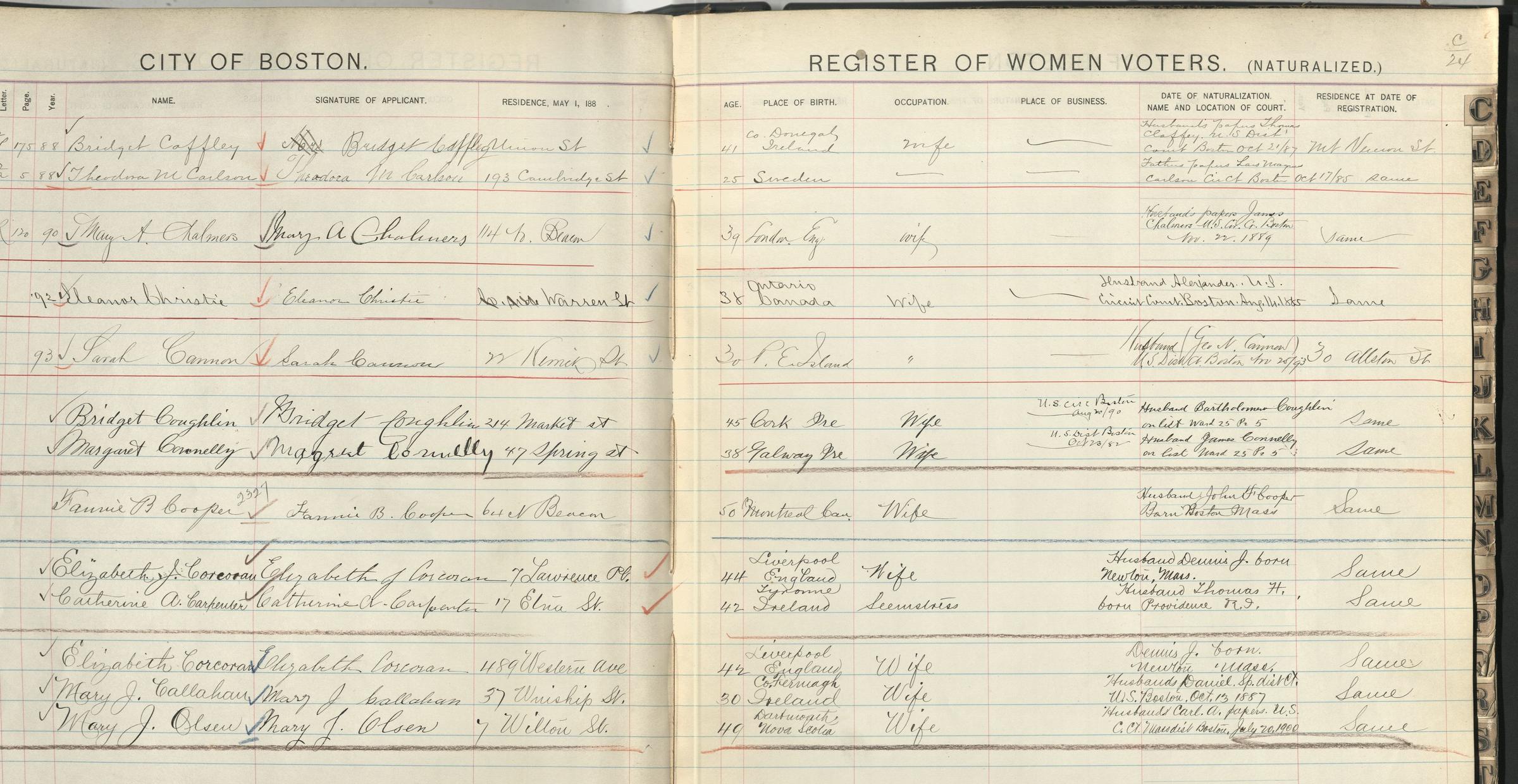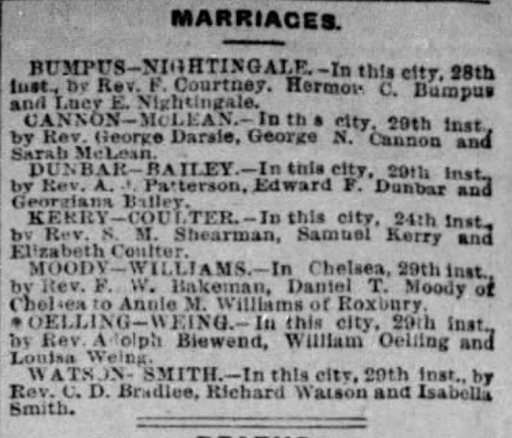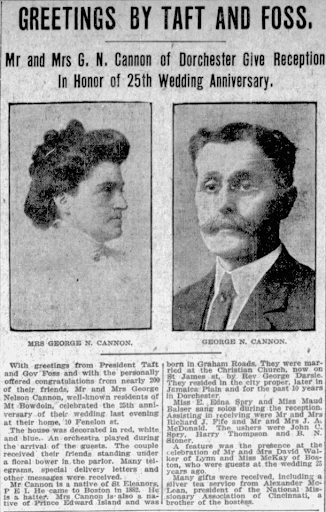Couples Who Vote Together: Voting While Married Before the 19th Amendment
Sarah Cannon’s 1893 voting registration reveals her eagerness to vote as a U.S. citizen– and the story of a devoted marriage.
by Daniela Gil Veras
On November 25, 1893, 30-year-old Sarah Cannon hurried to get registered with the City of Boston to vote in school committee elections. She was one of many women who registered to vote in such elections, after the Massachusetts Legislature granted women partial suffrage to vote for school committee members in 1879.
Because she was a Canadian immigrant, Cannon’s registration was kept in a separate group of registers from those for native-born American women. Like other married women born outside the U.S., Sarah Cannon had to wait for her husband in order to be eligible to become a citizen, or to vote.
At first glance, Sarah Cannon’s entry in the naturalized women voter register for Ward 25 (which, at the time, represented Allston and Brighton) does not seem to stand out much from the rest of the entries. She provided all the necessary information and documentation, signed her name in the book, and completed registration like many women before and after her. However, if one just takes the time to look at her entry a bit closer, one very intriguing detail becomes clear. That is, the date on the naturalization papers for her husband, George N. Cannon, is the very same date of her registration: November 25, 1893.
The entry thus shows that, on November 25, 1893, George and Sarah Cannon went to get naturalized and registered to vote one after the other. As part of the registration process, immigrant women had to present proof of citizenship through their own naturalization papers, or, more commonly, their husband’s or father’s naturalization papers. Sarah evidently used her husband’s recently acquired papers to complete her registration. On the other hand, immigrant women with native-born American husbands were exempt from having to provide naturalization papers, they simply had to present proof and location of their husband’s birth in the United States.
From the entry, it is easy to imagine George acquiring his papers and promptly giving them to his wife, Sarah, potentially even joining her as she signed her name down and registered to vote in Massachusetts. Interestingly enough, further research into the Cannons supports a depiction of the couple being quite loving and dedicated towards one another, successfully maintaining a decades-long marriage.
Both George N. Cannon and Sarah Cannon, neé McLean, were natives of Prince Edward Island, Canada. It is unclear whether or not they met while in Canada, but what is known is that they married in the city of Boston on December 29, 1886. They evidently stayed in Boston and around Boston, where George worked as a hatter– at least until 1911. Roughly seven years after their wedding, George and Sarah got naturalized and registered to vote. Sometime soon after Sarah’s voting registration, the Cannons settled in Dorchester, where they became respected members of their community.
It is in their home in Dorchester where the Cannons hosted a reception in order to commemorate their 25th wedding anniversary in 1911. The Cannons received many congratulations during the reception, and were even sent greetings by the then-President Taft and Governor Foss!
The Cannons’ reception appears to have been lavish and well-attended by friends and family members, including guests who had attended their wedding 25 years prior. Though it is unclear exactly how the Cannons had connections to President Taft and Governor Foss, the connections may have been a result of Sarah’s active role in Boston Christian activist groups. Many years after the article about the Cannon’s 25th wedding anniversary, a Boston Globe article from May 28, 1935 mentions that “Mrs. George N. Cannon” had been elected a director of the Melrose Women’s Christian Temperance Union (W.C.T.U.), and it does not feel like too much of a stretch to imagine that she had been active in religious activist groups prior to the publication of that particular article.
George N. Cannon passed away before his wife, in 1936, and it does not appear that Sarah Cannon remarried after his death. Rather, she appears to have stayed a widow until her own death in 1956. She and George are buried together in Nahant, a town around ten miles outside Melrose, Massachusetts.
The voter registers record the traces of thousands of other stories like Sarah and George Cannon’s. Stay on the lookout for more as the Mary Eliza Project continues to transcribe them!
Daniela Gil Veras is a junior at SImmons University, majoring in history with a minor in music on the Pre-Law track. She is a Faculty Student Collaborative Fellow working on the Mary Eliza Project.




